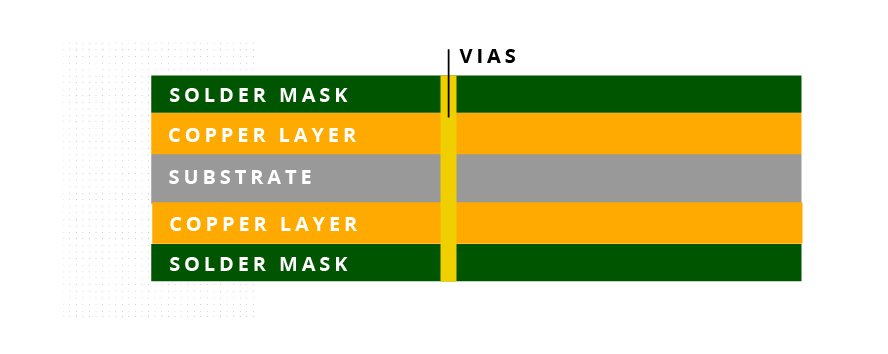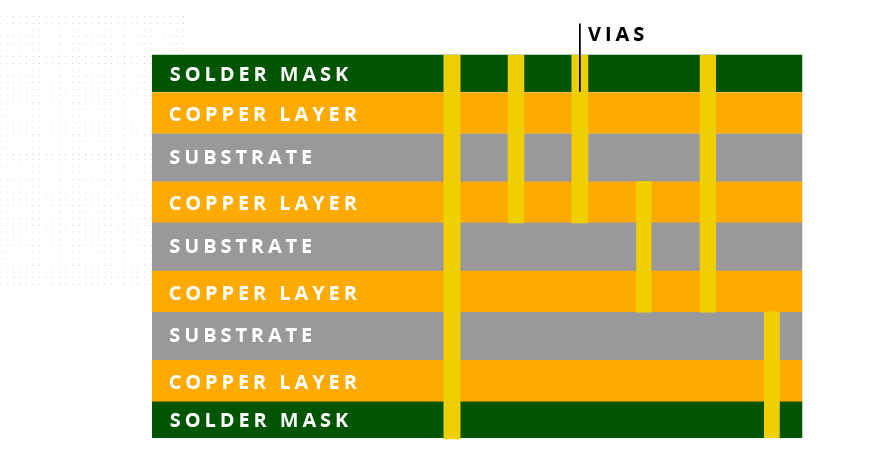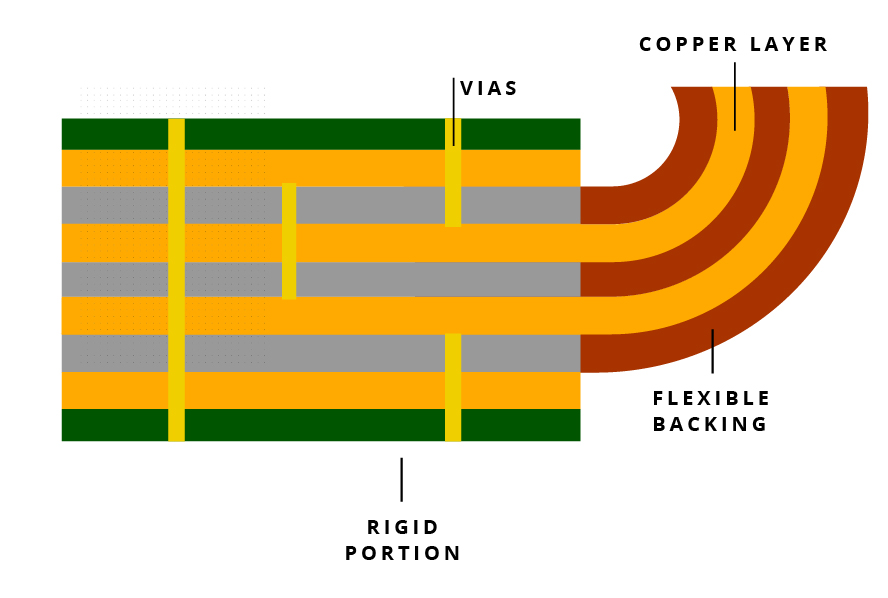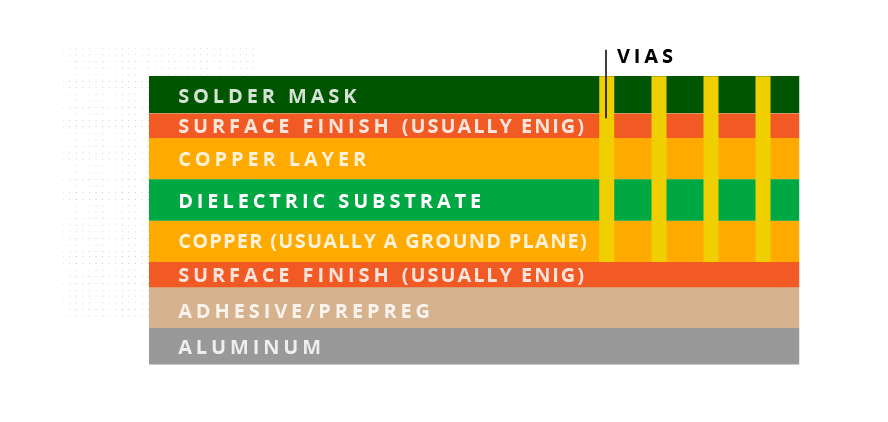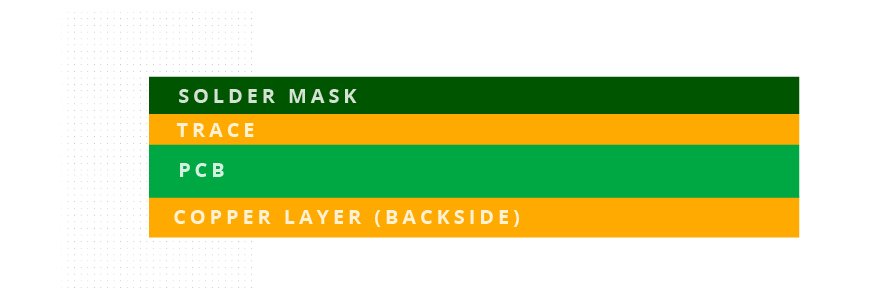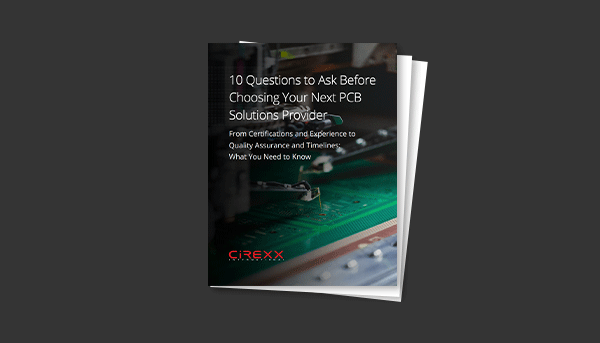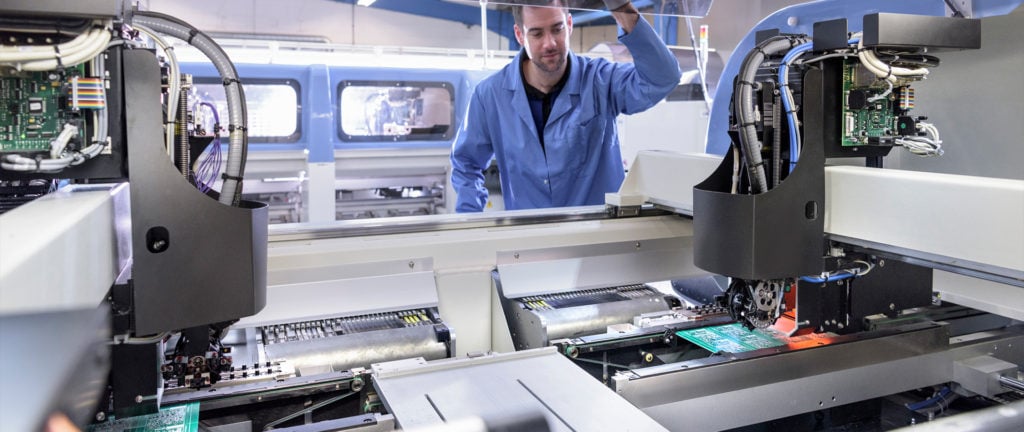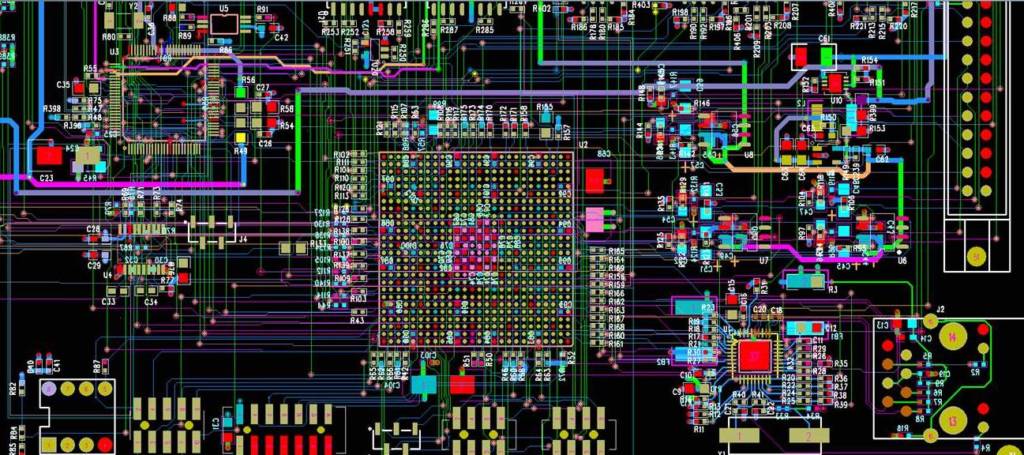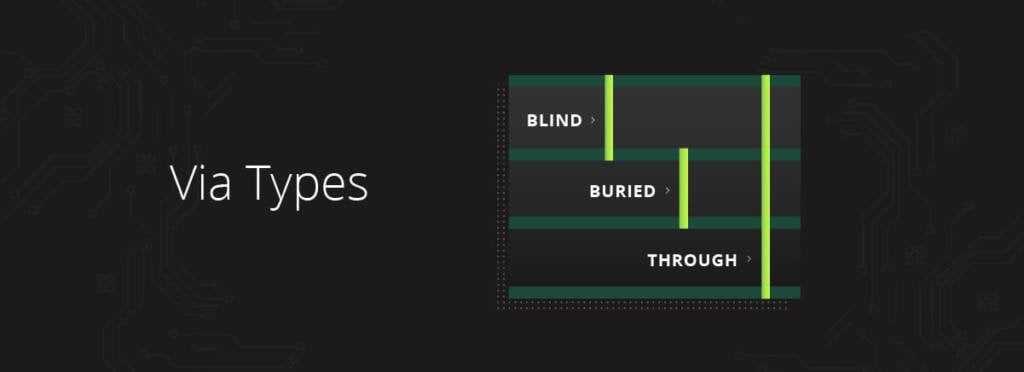PCB Types Explained [Your Complete Guide]
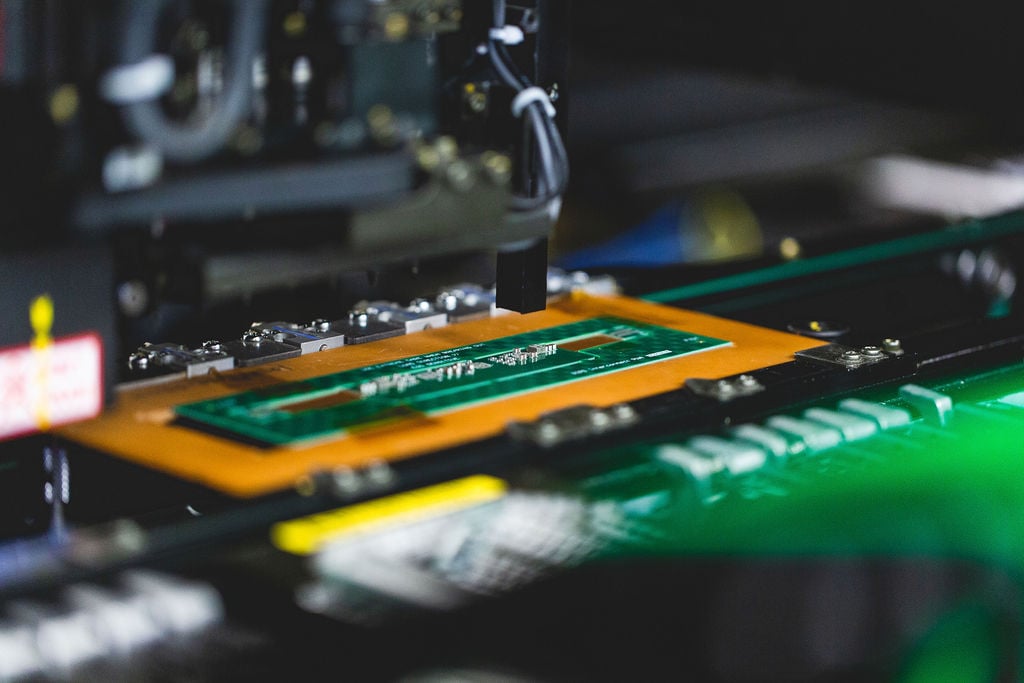
Cell phones, dishwashers, microwaves, missiles, blood glucose monitors, vehicle navigation systems, computers — what do they all have in common? Three words: Printed circuit boards (PCBs).
These items — and many, many more — wouldn’t be able to function without printed circuit boards. If an item has an electrical component, it definitely has a printed circuit board (or probably at least a few!), which means PCBs are essential in almost every industry around the world: healthcare, oil, military, telecommunications, and consumer goods, just to name a few. But what exactly is a PCB, and what are the different types?
In this complete guide, we discuss everything you need to know when it comes to understanding printed circuit boards, including outlining all types, how they are made, and which PCB may be right for your next project.
What Is a PCB?
Where Are PCBs Used?
Types of Printed Circuit Boards
Single Layer PCBs
Double Layer PCBs
Multi-Layer PCBs
Flexible PCBs
Rigid-Flex PCBs
High Frequency PCBs
Aluminum Backed PCBs
Heavy Copper PCBs
Halogen Free PCBs
High TG PCBs
What Is a PCB?
A printed circuit board, or PCB, is the interconnect for the operation of anything electrical, such as a cell phone, missile, or dishwasher. In other words, if a system contains an electrical component, it probably contains at least one printed circuit board.
Where Are PCBs Used?
Maybe you never thought about it until now, but printed circuit boards are everywhere — from hospital equipment and the LED bulbs in your office to your cell phone and iPad.
Here are some common places where you’ll find PCBs:
- Medical devices: CAT imaging systems, ultrasonic scanners, blood glucose monitors, blood pressure monitors, pacemakers, and more
- Industrial machinery: Manufacturing equipment, such as electric drills, and any type of equipment that measures and controls pressure and temperature
- Lighting: Light-emitting diodes (LEDs), which are used in everything from residential homes to stores, computer displays, and hospitals
- Automotive: Navigation and entertainment systems, control systems, and sensors
- Military aerospace: Monitoring and communication equipment, power supplies, flight systems, and hardware
- Defense: Communications equipment, control systems, computers, vehicles, firearms and more
- Consumer products: PCBs are found in most everyday items around your home or office: cell phones, tablets, dishwashers, computers, radios, home appliances, ear buds, and many more
- Oil industry: Monitoring and downhole sensors
Types of Printed Circuit Boards
While the general idea and construction of a printed circuit board is generally the same, it’s important to remember that every circuit board is different. There is no “off-the-shelf” board; each PCB is custom made.
Single Layer PCBs
This type of PCB is made out of a single layer of material (or substrate). One side of the material is laminated with a layer of metal — typically copper.
Single layer PCBs are typically used in RF microwave capabilities and consumer electronics, such as computers, radios, appliances, and cell phones.
Double Layer PCBs
In a double layer PCB, both sides of the material (or substrate) have a metal layer. These are often found in many consumer electronics, such as cell phones, and other devices such as power monitoring, test equipment, and amplifiers. Double layer PCBs are also used in interposer technology, which connects two printed circuit boards.
Multi-Layer PCBs
A multilayer PCB contains three or more copper conductive layers, and usually with plated through holes.
If the multilayer circuit board is constructed of both flexible and rigid materials, it’s referred to as a rigid-flex circuit board. A rigid-flex circuit board is a 3D interconnect that can be bent and folded into almost any shape. Rigid-flex technology allows designers to replace multiple PCBs with interconnecting wires and/or cables into one single unit, offering improved performance and increased reliability, as well as saving space.
Multi-layer boards are commonly used in high density interconnect (HDI) PCBs, which have become increasingly popular and are used in a variety of industries, including medical, military, and aerospace. HDI PCBs are found most notably in smartphones, tablets, and other digital devices.
Flexible PCBs
A flexible PCB is a printed circuit board that can be shaped and designed to fit into certain products or systems.
A flex, or flexible, circuit is a made of thin, flexible material. Applications for flex circuits might be as simple as a one layer circuit. A multilayer printed wiring circuit board contains three or more copper conductive layers usually with plated through holes.
Rigid-Flex PCBs
If the multilayer circuit board is constructed of both flexible and rigid materials, it’s referred to as a rigid-flex circuit board.
A rigid-flex circuit board is a 3D interconnect that can be bent and folded into almost any shape. Rigid-flex technology allows designers to replace multiple PCBs with interconnecting wires and/or cables into one single unit, offering improved performance and increased readability. Rigid-flex circuits can have up to 50 layers, replacing bulky wire harnesses with a compact, robust design.
Rigid-flex circuit board technology reduces the need for bulky, heavy wire harness cables within an electronic system. It also saves installation time and part costs and results in a cleaner — and typically more compact — top level assembly.
High Frequency (HF) PCBs
HF PCBs are defined by low levels of thermal expansion and are used for high technology HDI. They are also used extensively in high speed communications and RF microwave technology.
Aluminum Backed PCBs
An aluminum-backed PCB is typically related to thermal conductivity and removing heat from a printed circuit board. When you turn on a circuit board, it can get hot, which means it will start to lose its computing power. Adding aluminum to a PCB with a conductive adhesive draws the heat out and channels it into a chassis, which means the board will run more efficiently. This PCB is used in a lot of RF communications.
Heavy Copper PCBs
Certain printed circuit boards are designed to produce more amperage (or the strength of the electrical current) through the trace. But the higher the power requirement, the thicker the copper you need in order to transmit the signal through the board. Heavy copper PCBs are used in higher amperage designs.
Halogen Free PCBs
Halogen free PCBs are substrates that meet EU directives.
High TG PCBs
Tg is a mechanical property otherwise known as the glass transition temperature. It’s the point at which a material changes state. These types of PCBs are required for higher operating temperatures and for lead-free soldering.
Find the Right PCB for Your Next Project
It’s important to consult experienced professionals from the start. Here at Cirexx, our highly skilled engineers work with clients from the beginning of any project to provide valuable recommendations on the type of PCB you need, materials, stack ups, and how to design for manufacturability.
Cirexx has the industry-leading procedures, facilities, and team to fulfill all of your custom PCB manufacturing needs. We invite you to contact us today so we can answer any questions you may have and learn more about your next PCB project.


